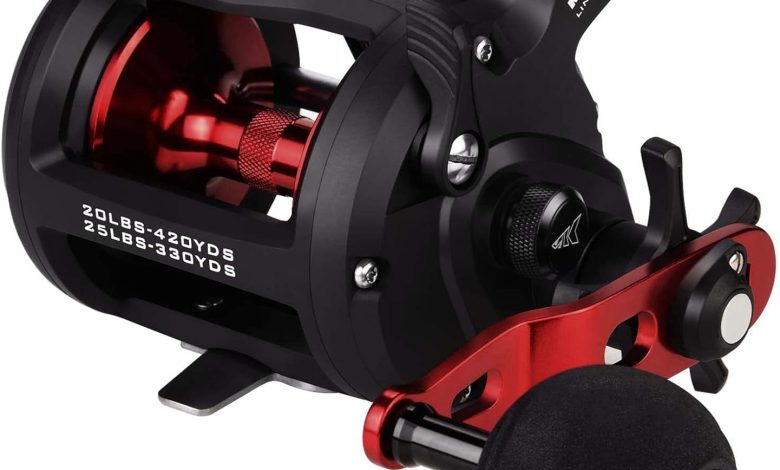Guide to Selecting the Best Fishing Line for Spinning Reels

Selecting the best fishing line for spinning reels is crucial for a successful day of angling. Whether you’re a seasoned pro or a beginner, the type of fishing line you use can significantly impact your casting distance, sensitivity, and overall fishing experience. In this comprehensive guide, we’ll explore the different types of fishing lines available, their characteristics, and how to choose the best one for your spinning reel setup.
Understanding the Types of Fishing Lines
Before we dive into the specifics of selecting the best fishing line for spinning reels, it’s essential to understand the various types of fishing lines on the market. There are three primary types: monofilament, fluorocarbon, and braided lines, each with its own unique characteristics and applications.
Monofilament Fishing Line
Anglers often prefer monofilament fishing line because of its versatility and cost-effectiveness, making it a popular choice. It is made from a single strand of nylon, which gives it its name. Monofilament lines are available in various pound-test strengths and are known for their flexibility and ease of handling.
Advantages of Monofilament Fishing Line:
- It has excellent knot strength, making it suitable for tying various fishing knots.
- Monofilament is buoyant, which can be advantageous when fishing topwater lures.
- It’s user-friendly and well-suited for novice anglers.
Disadvantages of Monofilament Fishing Line:
- Monofilament has higher visibility underwater compared to other lines, potentially spooking finicky fish.
- It has some degree of stretch, which can reduce sensitivity when detecting strikes.
Fluorocarbon Fishing Line
Fluorocarbon fishing line has gained popularity in recent years, primarily due to its near-invisibility underwater. It is made from a denser material than monofilament and is less visible to fish. Fluorocarbon lines are also resistant to abrasion, making them suitable for various fishing environments.
Advantages of Fluorocarbon Fishing Line:
- Its low visibility underwater makes it an excellent choice for finesse fishing.
- Fluorocarbon has low stretch, providing enhanced sensitivity to detect even the subtlest of strikes.
- It is highly abrasion-resistant, which makes it ideal for fishing in rocky or snag-filled areas.
Disadvantages of Fluorocarbon Fishing Line:
- Fluorocarbon lines tend to be stiffer than monofilament, which can affect casting distance.
- It may be more expensive than monofilament, although it offers improved performance.
Braided Fishing Line
A braided fishing line, as the name suggests, consists of multiple strands of synthetic materials woven together. It is known for its exceptional strength-to-diameter ratio and is the go-to choice for anglers targeting large, hard-fighting fish.
Advantages of a Braided Fishing Line:
- It offers incredible strength, allowing anglers to use thinner lines for the same pound-test strength.
- Braided lines have minimal stretch, providing exceptional sensitivity for detecting strikes.
- They are highly visible above water, making it easier to track line movement.
Disadvantages of a Braided Fishing Line:
- Braided lines are more visible underwater, which can be a disadvantage in clear-water situations.
- They can be challenging to tie knots with, and some knots may slip if not properly secured.
Choosing the Best Fishing Line for Spinning Reels
Now that you have a better understanding of the different types of fishing lines, let’s delve into the factors to consider when selecting the best fishing line for your spinning reel:
Fishing Environment
Your choice of fishing line should be influenced by the environment in which you plan to fish. Consider the following:
- Freshwater vs. Saltwater: If you’re primarily fishing in freshwater, monofilament and fluorocarbon lines are suitable. For saltwater angling, where the fish are larger and stronger, braided lines are often preferred.
- Water Clarity: In clear-water conditions, fluorocarbon is an excellent choice due to its low visibility. In murky water, monofilament or braided lines can be more effective.
Target Species
Different fish species have varying behaviors and require specific fishing lines. Consider the following:
- Small to Medium-Sized Fish: Monofilament or fluorocarbon lines are suitable for species like bass, trout, and panfish.
- Large and Hard-Fighting Fish: When targeting species like tarpon, tuna, or muskellunge, braided lines are the better choice due to their strength.
Fishing Techniques
Your preferred fishing techniques also play a role in line selection.
- Topwater Lures: For surface fishing with topwater lures, monofilament is often preferred due to its buoyancy.
- Deep-Sea Fishing: When fishing at significant depths, braided lines are advantageous as they sink less than monofilament or fluorocarbon.
Casting Distance
If casting distance is a crucial factor in your angling, consider the line’s diameter and casting performance. Braided lines are known for their thin diameters, allowing for longer casts. However, monofilament and fluorocarbon lines can also provide satisfactory casting performance with proper spooling and technique.
Sensitivity
Sensitivity is essential for detecting subtle strikes. If you’re fishing for finicky species or in situations where every nibble counts, fluorocarbon or braided lines are your best bet. These lines have low stretch, which increases sensitivity compared to monofilament.
Budget
Your budget will also influence your choice of fishing line. Monofilament lines are generally the most budget-friendly option, followed by fluorocarbon, with braided lines often being the most expensive. Consider your budget constraints while balancing the line’s performance with your specific needs.
Popular Fishing Line Brands
When it comes to selecting a fishing line for your spinning reel, it’s essential to choose a reputable brand known for producing high-quality lines. Here are some popular fishing line brands to consider:
- Berkley: Berkley offers a wide range of monofilament, fluorocarbon, and braided lines suitable for various fishing applications. Their lines are known for their strength and reliability.
- PowerPro: PowerPro is a well-known brand in the braided line market, offering a variety of line options with impressive strength and casting performance.
- Seaguar: Seaguar is a leading manufacturer of fluorocarbon lines and is highly regarded for its invisibility underwater and abrasion resistance.
- Sufix: Sufix provides a variety of fishing lines, including monofilament, braided, and fluorocarbon options. Their lines are known for their durability and knot strength.
Spooling and Maintenance Tips
Once you’ve chosen the best fishing line for your spinning reel, it’s crucial to spool it correctly and maintain it for optimal performance. Here are some essential tips:
- Proper Spooling: Ensure that the line is spooled onto the reel tightly and evenly to prevent line twists and tangles during casting.
- Regular Inspection: Check your line for signs of wear and damage, such as nicks, frays, or abrasions. Replace the fishing line if you observe any problems or concerns.
- Reel Maintenance: Keep your spinning reel clean and well-maintained to prevent line snags and tangles. Apply lubrication to the reel as necessary to guarantee smooth functionality.
- Knot Security: Use appropriate knots and ensure they are securely tied to prevent line breakage during fights with strong fish.
Conclusion
Selecting the best fishing line for your spinning reel is a critical decision that can significantly impact your angling success. By considering factors such as fishing environment, target species, fishing techniques, casting distance, sensitivity, and budget, you can make an informed choice. Additionally, choosing a high-quality fishing line from a reputable brand and properly spooling and maintaining it will help you enjoy a successful and stress-free day on the water. With the right fishing line, you’ll be well prepared to tackle various fishing challenges and reel in your desired catch.
You can also read our blog: Everything you Should Know About Fishing in Cabo San Lucas






